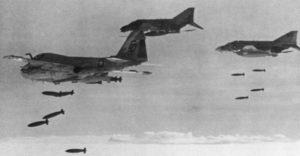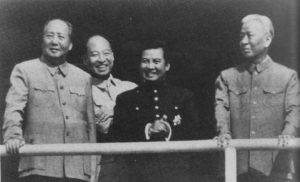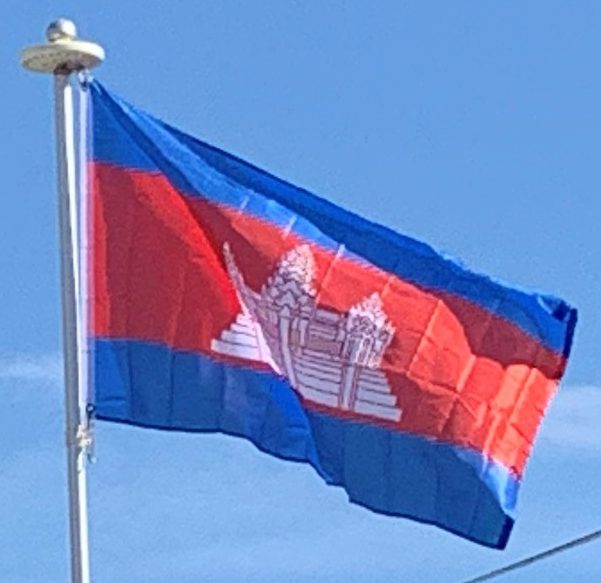
Khmer Republic (1970–75):
While visiting Beijing in 1970 Sihanouk was ousted by a military coup led by Prime Minister General Lon Nol and Prince Sisowath Sirik Matak. US support for the coup remains unproven. However, once the coup was completed, the new regime, which immediately demanded that the Vietnamese communists leave Cambodia, gained the political support of the United States. The North Vietnamese and Viet Cong forces, desperate to retain their sanctuaries and supply lines from North Vietnam, immediately launched armed attacks on the new government. The king urged his followers to help in overthrowing this government, hastening the onset of civil war.
Soon Khmer Rouge rebels began using him to gain support. However, from 1970 until early 1972, the Cambodian conflict was largely one between the government and army of Cambodia, and the armed forces of North Vietnam. As they gained control of Cambodian territory, the Vietnamese communists imposed a new political infrastructure, which was eventually dominated by the Cambodian communists now referred to as the Khmer Rouge. Between 1969 and 1973, Republic of Vietnam and US forces bombed Cambodia in an effort to disrupt the Viet Cong and Khmer Rouge.

The Khmer Republic’s leadership was plagued by disunity among its three principal figures: Lon Nol, Sihanouk’s cousin Sirik Matak, and National Assembly leader In Tam. Lon Nol remained in power in part because neither of the others was prepared to take his place. In 1972, a constitution was adopted, a parliament elected, and Lon Nol became president. But disunity, the problems of transforming a 30,000-man army into a national combat force of more than 200,000 men, and spreading corruption weakened the civilian administration and army.
The Communist insurgency inside Cambodia continued to grow, aided by supplies and military support from North Vietnam. Pol Pot and Ieng Sary asserted their dominance over the Vietnamese-trained communists, many of whom were purged. At the same time, the CPK forces became stronger and more independent of their Vietnamese patrons. By 1973, the CPK were fighting battles against government forces with little or no North Vietnamese troop support, and they controlled nearly 60% of Cambodia’s territory and 25% of its population. The government made three unsuccessful attempts to enter into negotiations with the insurgents, but by 1974, the CPK were operating openly as divisions, and some of the NVA combat forces had moved into South Vietnam. Lon Nol’s control was reduced to small enclaves around the cities and main transportation routes. More than 2 million refugees from the war lived in Phnom Penh and other cities.
On New Year’s Day 1975, Communist troops launched an offensive which, in 117 days of the hardest fighting of the war, collapsed the Khmer Republic. Simultaneous attacks around the perimeter of Phnom Penh pinned down Republican forces, while other CPK units overran fire bases controlling the vital lower Mekong resupply route. A US-funded airlift of ammunition and rice ended when Congress refused additional aid for Cambodia. The Lon Nol government in Phnom Penh surrendered on 17 April 1975, just five days after the US mission evacuated Cambodia.
Khmer Rouge Regime, 1975–1978:
The Khmer Rouge reached Phnom Penh and took power in 1975. Led by Pol Pot, they changed the official name of the country to Democratic Kampuchea. The new regime modeled itself on Maoist China during the Great Leap Forward, immediately evacuated the cities, and sent the entire population on forced marches to rural work projects. They attempted to rebuild the country’s agriculture on the model of the 11th century, discarded Western medicine and destroyed temples, libraries, and anything considered Western.
